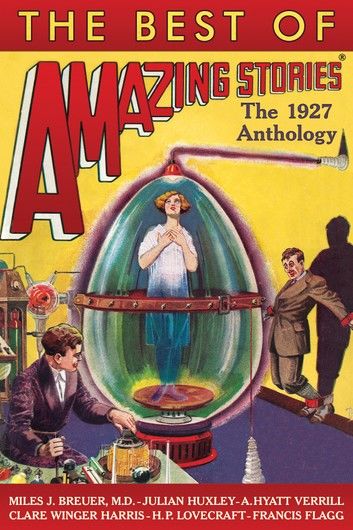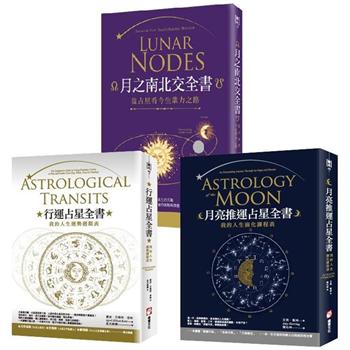| FindBook |
有 1 項符合
The Best of Amazing Stories: The 1927 Anthology的圖書 |
 |
The Best of Amazing Stories: The 1927 Anthology 作者:Steve Davidson(Ed.), Jean Marie Stone (Ed.),Jack Williamson,Edmond Hamilton,H. P. Lovecraft,Clare Winger Harris 出版社:Digital Parchment Services, Inc. 出版日期:2018-08-09 |
| 圖書館借閱 |
| 國家圖書館 | 全國圖書書目資訊網 | 國立公共資訊圖書館 | 電子書服務平台 | MetaCat 跨館整合查詢 |
| 臺北市立圖書館 | 新北市立圖書館 | 基隆市公共圖書館 | 桃園市立圖書館 | 新竹縣公共圖書館 |
| 苗栗縣立圖書館 | 臺中市立圖書館 | 彰化縣公共圖書館 | 南投縣文化局 | 雲林縣公共圖書館 |
| 嘉義縣圖書館 | 臺南市立圖書館 | 高雄市立圖書館 | 屏東縣公共圖書館 | 宜蘭縣公共圖書館 |
| 花蓮縣文化局 | 臺東縣文化處 |
|
|
1927 was a banner year for Amazing Stories. For Amazing’s second year, Gernsback knew he would have to find more new writers with up-to-date science fictional ideas. And in 1927, Gernsback succeeded in spades, introducing not only a bumper crop of new authors and fresh stories, but also four brand spanking new tropes, to the nascent world of science fiction.
In 1927 A. Hyatt Verrill’s “Plague of the Living Dead,” wasn’t just another story of bloodthirsty zombies on the hunt, made more credible with a scientific rationale for their existence—it’s the first such story ever! Pretty cool! But Gernsback was just getting warmed up. The 1927 Amazing Stories was also the first publication to introduce the work of the now-legendary fantasist H. P. Lovecraft to a mass audience. Though often mistaken as a writer of supernatural fiction, Lovecraft was actually a science fiction author, whose famed evil gods—the Great Old Ones such as Cthulhu, Azathoth, Yog-Sothoth, and Nyarlathotep—were not gods at all, but highly advanced aliens inspired by Lovecraft’s readings of the new discoveries of Eddington, Einstein, and other early 20th century scientists. But Gernsback wasn’t finished yet. He also introduced the work of a man whom the magazine’s readers would consider one of the leading science fiction writers of its first decade: Miles J. Breuer, M.D. Although physician Brewer would become famed for mind-bending stories of conceptual breakthrough, usually facing mortals with dimensional dilemmas—such as “The Gosstak and the Doshes” and “The Captured Cross-Section”—his debut in Amazing, “The Man with the Strange Head,” took a different tack and its appearance would mark the birth of yet another trope: that of a man who extends his life and strength through the creation of a mechanical body may also have served as a direct inspiration for Ironman’s suit. And fourteen months after his inaugural issue and only six months after he began his push to fill Amazing with new writers and stories, Gernsback introduced the first woman author to appear in the pages of a science fiction magazine, Claire Winger Harris—and she introduced “TheFate of the Poseidonia, the first story in which the Earth is saved not by a hero but a heroine, a pacesetter tale whose style, characterization and superior storytelling would only be equaled by the best of Amazing’s male writers during its first decade.
But, these four classics aren't the only first-rate stories Gernsback could boast of in 1927, and in this anthology you will find six more bests from that year, including “Retreat to Mars” by Cecil B. White—an “idea story” with a kicker—and Benjamin Witwer's “Radio Mates” which, unlike so many scientific-device-leads-our-hero-to-a-princess-in-need-of-rescue stories, offers a touch of romance between equals. Then, with “Advanced Chemistry” by Jack G. Huekels, we see not only the first story about chemistry in an sf magazine—but a story which has achieved a fame of its own in scientific circles, and been reprinted in scientifically-themed anthologies as well as textbooks over the years. Bob Olsen's “The Four-Dimensional Roller-Press” is a dimensional romp, with a nod to Edwin Abbott's Flatland, that proved so popular with readers that four further “Four-Dimensional” sequels were demanded. “The Machine Man of Ardathia” was one of the youthful Forrest J Ackerman's favorite stories—and some years later he considered it a high honor to be allowed to collaborate with the author, Francis Flagg. Though bound to stir unease in many readers, “The Tissue Culture King” by biologist Julian Huxley (brother of Aldous), is easily one of the most gracefully written stories ever printed in a Gernsback publication.
And, as a special treat for modern readers, we have paired each story with the original illustrations—most by the immortal Frank R. Paul, surely the first man to be paid to envision a new aspect of a new future every single day.
|











![114年台電新進雇員配電線路類超強4合1[國民營事業] 114年台電新進雇員配電線路類超強4合1[國民營事業]](https://media.taaze.tw/showLargeImage.html?sc=14100121137)